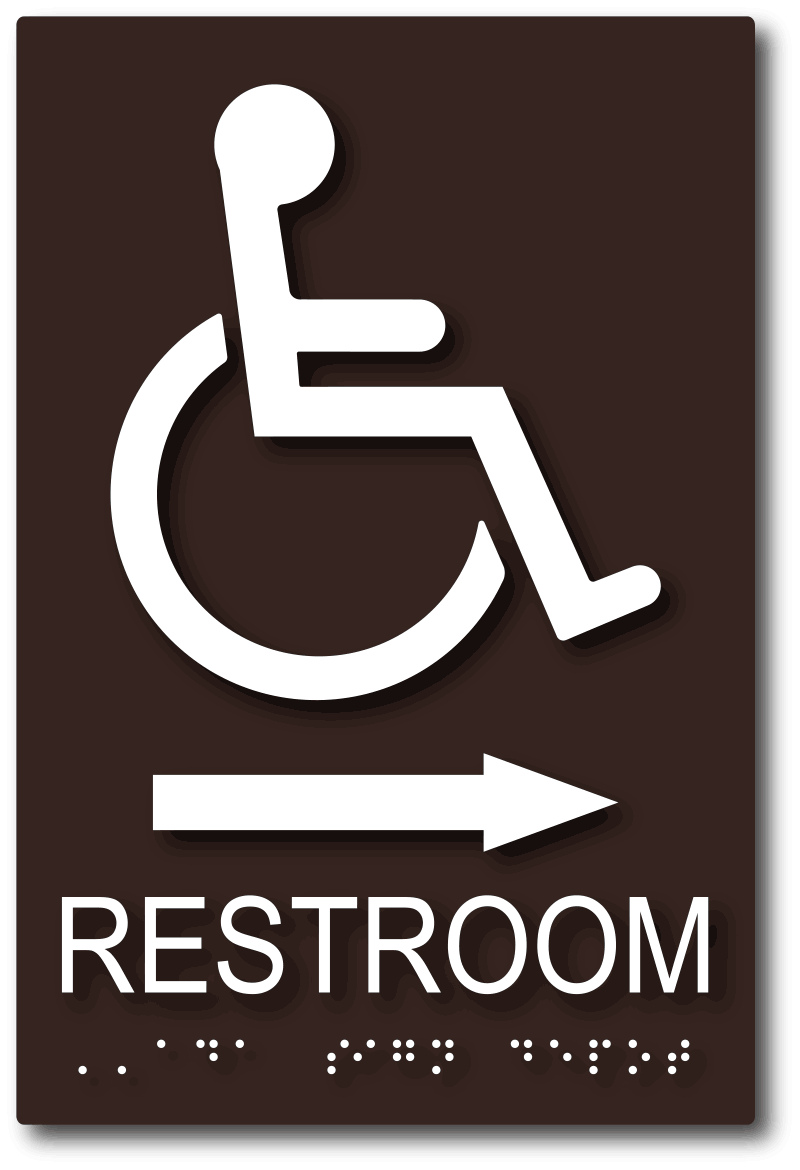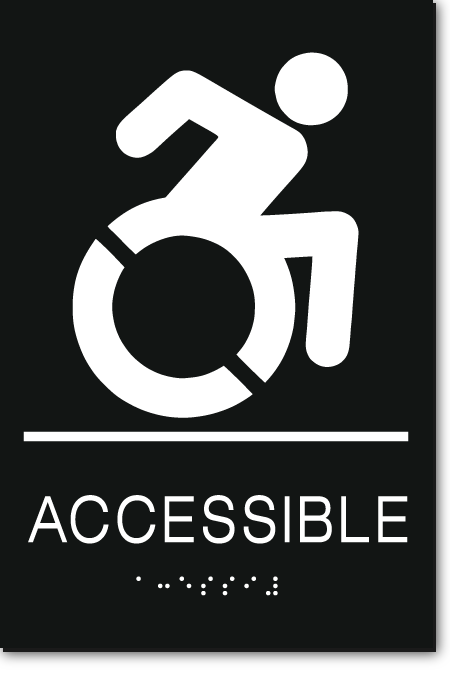Just How ADA Signs Boost Accessibility for Everyone
ADA Signage: Making Certain Ease Of Access and Conformity in Public Spaces
ADA signage plays an important role in ensuring accessibility and compliance within public rooms, considerably adding to an inclusive atmosphere for people with impairments. By sticking to ADA criteria, signage not just promotes navigation however additionally underscores an organization's devotion to diversity and equality. As we check out the subtleties of ADA signs, from tactile functions to make complexities, it's vital to consider exactly how these components coalesce to support the civil liberties of all users. What are the common risks companies face in maintaining compliance, and exactly how can future trends in signage proceed to drive accessibility ahead?
Relevance of ADA Signs
In contemporary society, the importance of ADA signs expands beyond plain compliance with legal requireds to personify a dedication to inclusivity and availability for all people. These indications are vital in producing environments where people with handicaps can browse public areas with the same ease and freedom as those without specials needs. By offering clear and standardized details, ADA signage ensures that every person can access centers, services, and details without obstacles.
The value of ADA signage hinges on its capacity to improve the lifestyle for individuals with specials needs by promoting equivalent accessibility. It gets rid of the obstacles that could or else impede their ability to get involved completely in neighborhood life. These indicators serve as noticeable indicators of a company's commitment to variety and equality, reflecting more comprehensive societal worths that champion the civil liberties and self-respect of all individuals.
In addition, ADA signs plays a vital role in public safety and security. By directing people to leaves, washrooms, and various other important centers, it ensures that all people, despite physical ability, can evacuate securely throughout emergency situations. In recap, ADA signage is not simply a regulatory demand yet a powerful tool for cultivating a inclusive and equitable society.
Crucial Element of Compliance

Placement is vital; signs have to be installed in locations that are easily visible and reachable. Normally, signs must be installed between 48 and 60 inches from the ground to guarantee ease of access for both standing and wheelchair individuals. Tactile components, such as Braille, are crucial for people with visual disabilities, offering crucial information in a non-visual layout.
High-contrast shades between the text and history are essential to improve readability for individuals with reduced vision. The ADA mandates details comparison ratios to ensure quality. Furthermore, character dimension is a vital factor to consider, with minimum elevation demands dictated by the viewing range to guarantee readability from various angles.
Layout Considerations for Ease Of Access
Designing obtainable signage needs a meticulous technique to guarantee it meets the requirements of all customers, particularly those with specials needs. The dimension of the text is similarly essential, with ADA guidelines recommending a minimal elevation based on viewing distance to make certain legibility.
Contrasting shades in between message and history are like it crucial for presence, specifically for people with visual disabilities. Additionally, tactile components, such as Braille and elevated personalities, are crucial for individuals who are blind or have low vision.
In addition, the positioning of signs plays a considerable role in ease of access. Signs should be mounted in locations that are easily obtainable and unhampered. Making certain that signs is mounted at appropriate elevations and angles allows all users, consisting of those utilizing wheelchairs, to connect with them properly.
Typical Mistakes to Stay Clear Of

An additional prevalent mistake is the incorrect positioning of signage. ADA standards specify exact height and place requirements to make sure that signs are obtainable and quickly noticeable by all individuals, consisting of those using wheelchairs. Neglecting these guidelines not just hinders access but additionally runs the risk of non-compliance with legal requirements.
In addition, inadequate comparison between text and history is a regular oversight. Adequate contrast is vital for readability, particularly for people with low vision. Designers often pick colors that are visually enticing yet lack the required comparison, providing the message challenging to determine.
Last but not least, some developers fail to incorporate tactile aspects, such as Braille, which are critical for individuals who are blind. Omitting these features not only leads to non-compliance with ADA guidelines yet additionally restricts access for a explanation segment of the population that depends on responsive details.
Future Trends in Signage
Advancements in innovation and boosting recognition of inclusivity are forming the future fads in signs layout. As culture comes to be more conscious of diverse needs, the integration of smart technologies into signage is gaining grip. Digital signs, as an example, is advancing to consist of interactive functions and real-time updates, which can be vital in supplying dynamic info in public spaces. These signs often include touch displays or gesture-based controls, allowing individuals to navigate material customized to their particular requirements.
An additional emerging fad is the use of augmented truth (AR) to enhance individual experience. AR-enabled signage can overlay electronic information onto the physical atmosphere, providing aesthetically damaged individuals with auditory or haptic responses. ADA Signs. This technology not just improves availability but likewise develops an appealing experience for all customers
Sustainability is also a substantial factor influencing signs trends. Eco-friendly products and energy-efficient lights services are being focused on to align with worldwide ecological goals. Developments in materials scientific research are leading to the development of more sturdy and weather-resistant indicators.
Conclusion
ADA signage plays a crucial function in assuring accessibility and compliance within public spaces by integrating tactile aspects, high-contrast shades, and critical positioning. The adherence to ADA criteria not just promotes secure navigating for people with handicaps but also signifies a company's dedication to diversity and inclusivity. By avoiding common blunders and welcoming future fads, public rooms can proceed to progress these values, making sure that the legal rights and dignity of all individuals are respected and upheld.
ADA signs plays an indispensable role in guaranteeing access and conformity within public areas, substantially contributing to an inclusive setting for people with specials needs. As we check out the nuances of ADA signs, from responsive features to design intricacies, it's critical to take into consideration exactly how these elements integrate to maintain the legal rights of all users.In modern-day culture, the importance of ADA signs prolongs beyond plain conformity with legal requireds to symbolize a commitment to inclusivity and access for all individuals. By providing clear and standard information, ADA signs ensures that every person can access facilities, services, and info without barriers.
ADA signs plays an important role in assuring ease of access and compliance within you can check here public rooms by integrating responsive aspects, high-contrast colors, and critical positioning. (ADA Signs)